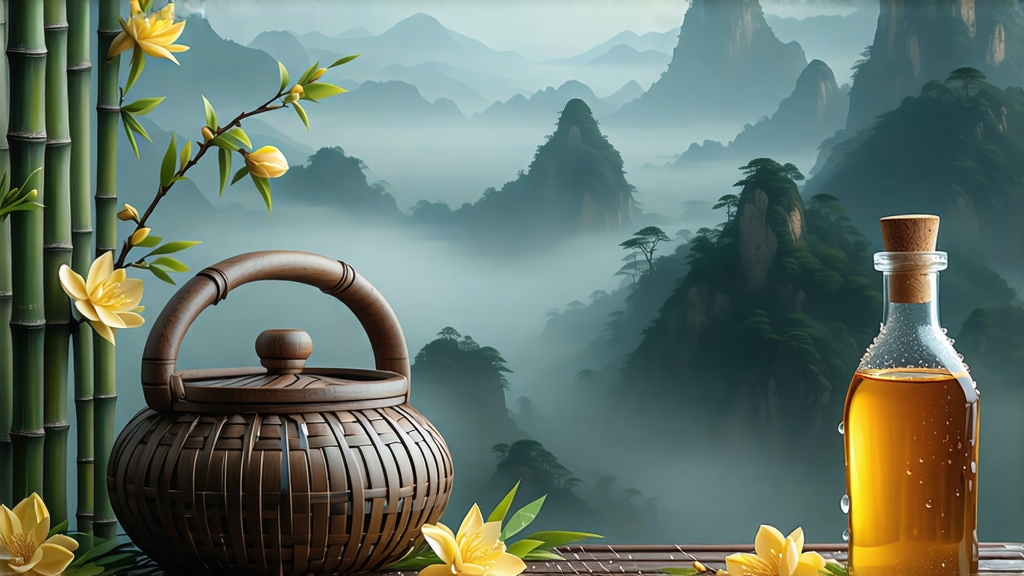
Tucked high on the shoulders of Mount Meng in Sichuan province, Meng Ding Huang Ya has been quietly perfecting its golden character for more than twelve centuries. Foreign tea lovers often greet yellow tea with a polite nod, then hurry back to the familiarity of green or oolong, yet this “imperial yellow bud” rewards patience with a cup that tastes like mountain mist translated into silk. The following portrait is an invitation to linger, to understand why the slowest tea in China was once carried by fast horses to the Tang-dynasty court, and why its modern revival feels like discovering a lost chord in the scale of Chinese flavor.
-
A bud in the mist: historical echoes
Meng Ding, literally “Peak of Meng,” is the easternmost ridge of the Tibetan Plateau where warm Sichuan humidity collides with cool Himalayan air. The resulting cloud blanket filters sunlight into a soft, shifting lantern that coaxes amino acids to accumulate in the tiny spring buds. A monk named Wu Lizhen is said to have planted seven tea bushes on the summit during the Han dynasty; by the Tang (618-907 CE) those bushes had become state property, their spring tips reserved for the emperor’s ancestral altars. The Song Annals record “yellow tribute” arriving in Bianliang (modern Kaifeng) packed in silver-foil cylinders, so delicate that palace handlers were forbidden to touch the leaf with bare fingers. After the Ming shifted the capital northward, the tea road from Sichuan grew perilous; Meng Ding Huang Ya faded into regional memory while green teas grabbed the export spotlight. Only in the 1950s did state tea institutes retrace mountain footpaths, interview elderly pickers, and reconstruct the almost-lost “sealed yellowing” technique that gives the tea its luminous color and mellowed edge. -
From garden to grade: what counts as true Meng Ding Huang Ya
The appellation is tiny: 13 villages scattered between 800 m and 1,400 m on the southern face of the massif. Within that micro-zone three grades are recognized:
- Ming-qian Single Bud (gold label): plucked 20 March–31 March, 100 % unopened bud, 8,000 buds yield 500 g finished tea.
- Yu-qian One Bud One Leaf (silver label): picked 1 April–10 April, the bud still outweighs the attached leaf.
- Late Spring Yellow Sprout (bronze label): picked before Grain Rain, one bud and two slim leaves, stronger but still sweet.
Below 800 m the same cultivar (local Sichuan small-leaf clone “Chuanxiao 2”) produces pleasant green tea, yet it lacks the high-altitude aromatics and the slow enzymatic chemistry that creates true yellow tea. International buyers should therefore look for the tiny green-and-gold authenticity sticker issued by the Ya’an Tea Office; the code can be scanned to reveal altitude, pluck date, and the name of the certified yellowing master who handled the batch.
- The craft of “men huang” – sealing the yellow
Yellow tea’s identity rests on one extra, maddeningly delicate step inserted between green tea’s kill-green and rolling stages. Locals call it men huang, “sealed yellowing,” a controlled re-warming that nudges chlorophyll toward olive and coaxes a whisper of oxidation without ever reaching the 10 % threshold that would push the leaf into oolong territory.
Day 1, dawn: pickers climb before sunrise to harvest buds beaded with overnight dew. The leaf is carried in bamboo quivers lined with banana leaf to prevent compression.
By 8 a.m. the buds are spread 2 cm thick on woven rattan trays and placed over a charcoal-free wood-stove trench; the temperature hovers at 75 °C for 90 seconds, just long enough to deactivate polyphenol oxidase while locking in a grassy top note.
Immediately the leaf is transferred to a humidified room (28 °C, 85 % RH) and piled 15 cm deep under damp linen. For the next 24 hours the tea master never sleeps; every 45 minutes he fluffs the pile to maintain an even 38 °C core temperature. A faint mango-like aroma signals that chlorophyll is breaking into pheophytin; the leaf edges turn mustard.
On day 3 the leaf is gently hand-rolled for eight minutes to rupture 30 % of cell walls, releasing amino sugars that will later caramel into honey.